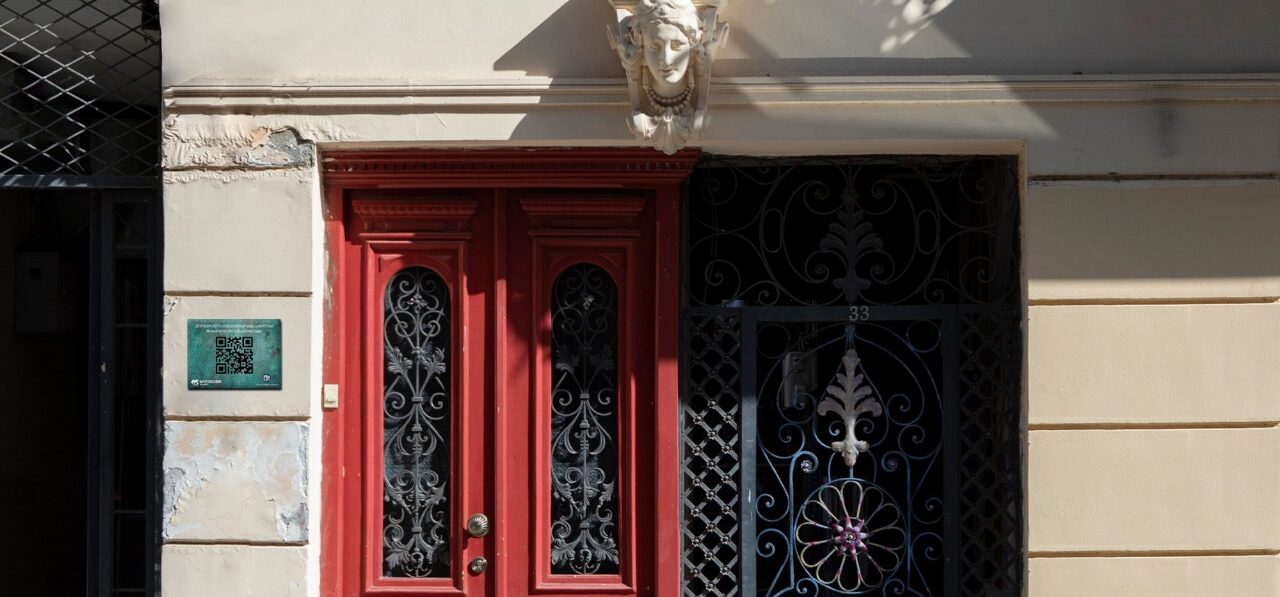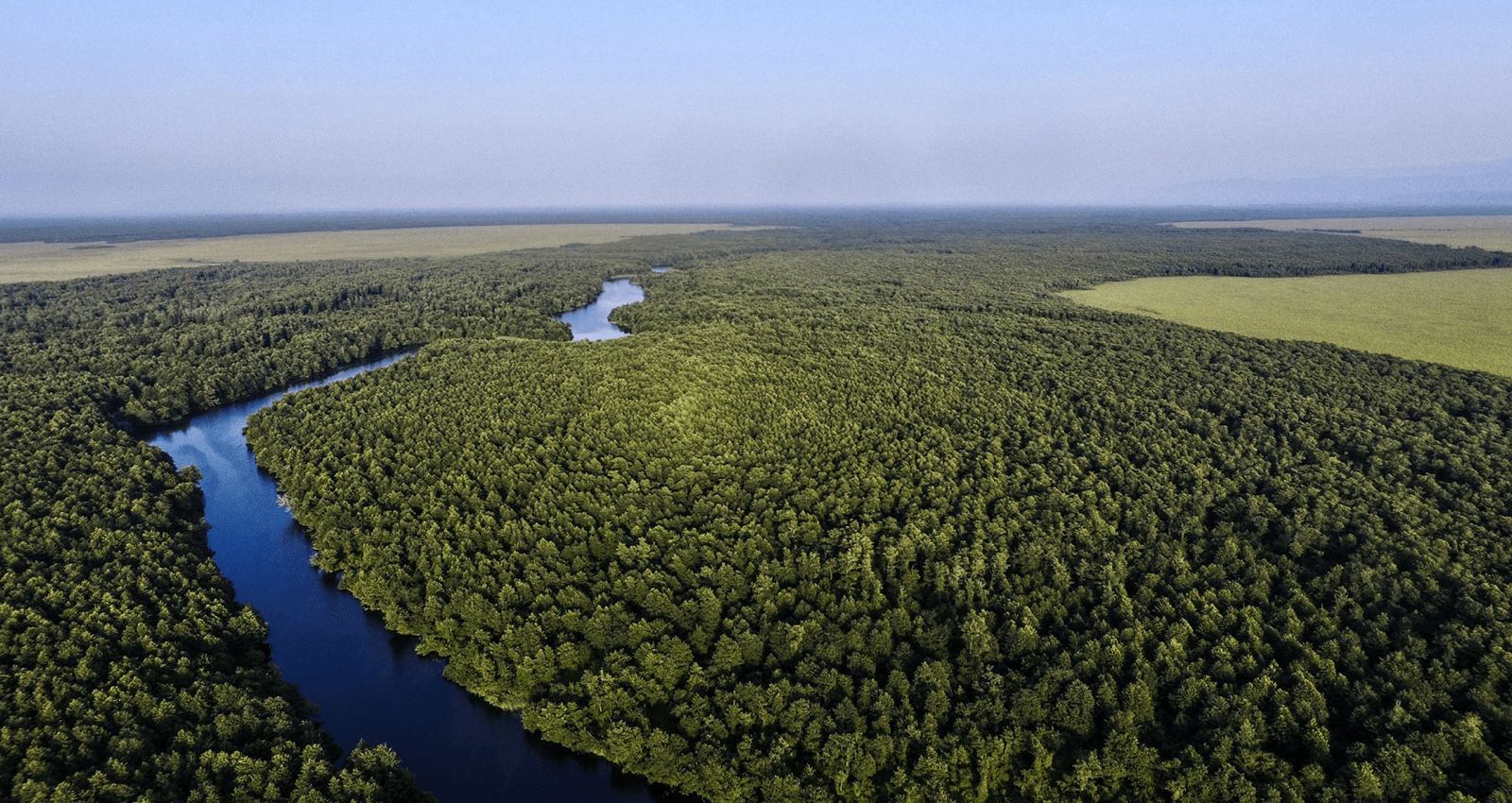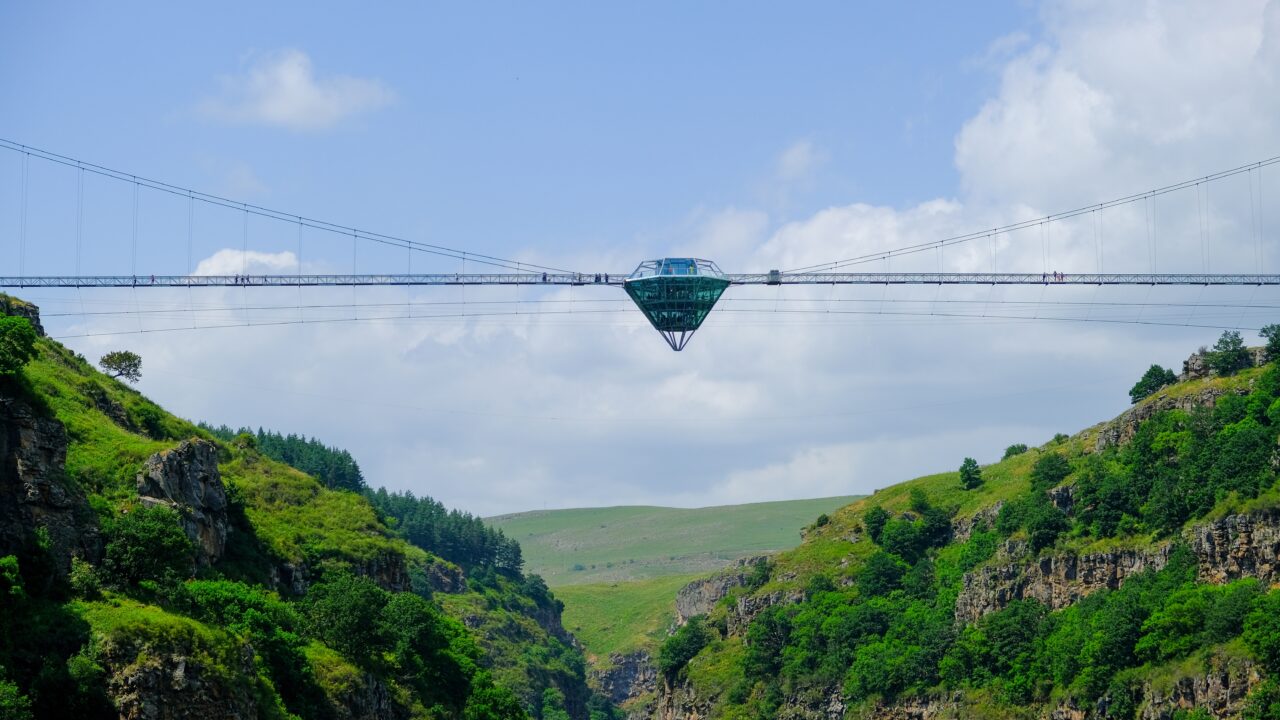Regions of Georgia
Georgians are famous for their viticulture, feasts, hospitality, picturesque environment, and many other things. Thankfully, the historical province of Kakheti is the best place to go in Georgia to discover all of these things. Kakheti offers several marvelous places to stay as well as many great places of interest, and is the place for meat and wine lovers.
Kakheti
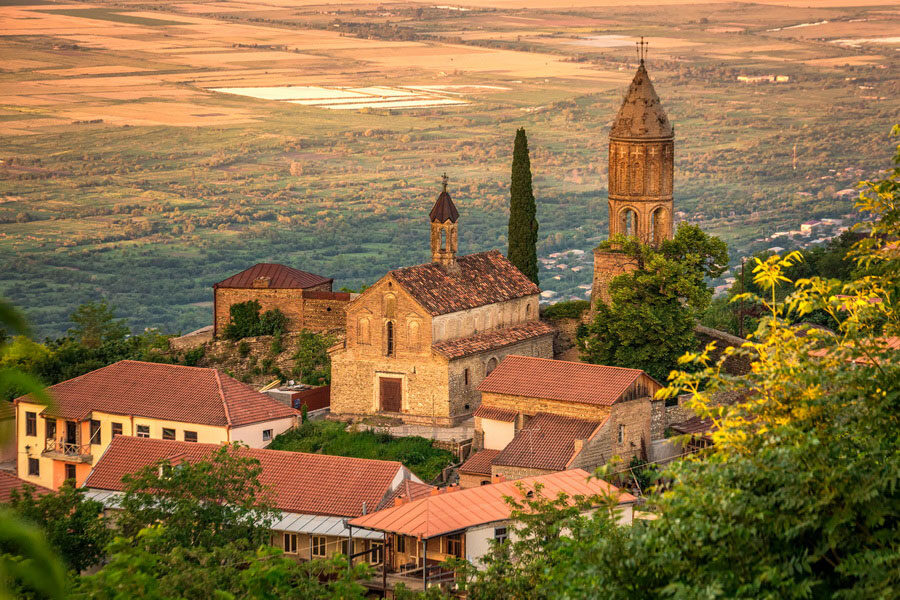
Photo Source: Advantour
Autumn is the best time of the year to visit Kakheti. It is the harvest period and you will most likely see people picking grapes, hauling them for pressing, and of course eating and sharing them, because Kakheti is all about the grapes.
A weekend tour is perfect for Kakheti. One option is to leave Tbilisi in the morning to visit Gremi (a 2 hour trip) followed by Gvirabi by Khareba, where you can have a meal and take a wine tour. This offers you the opportunity to have a Saturday full of beautiful scenery accompanied by great food and wine. Later you can have a relaxing spa session in an exceptional hotel – Royal Batoni.
On the second day, you can visit Tsinandali where you can see everything in a maximum of three hours (if you love walking in beautiful parks, you may need more time). Afterwards, you can head to Telavi and have a look around the Kakheti capital. Here you can have a meal before traveling to Sighnaghi where you may wish visit the Sighnaghi Museum which often hosts interesting art exhibitions. Wandering through Sighnaghi will take no longer than an hour and a half but will leave you speechless. Take as many photos as you can as you will definitely miss this tiny fairyland.
Things to note:
- People from Kakheti are very straightforward. Do not get upset if they say something blunt.
- Food is only offered once, so don’t be too shy to accept or else you will be left with nothing.
- Be aware that these people are masters of drinking. Be prepared to be drank under the table if you dare to challenge them.
- The older generation will likely only know Georgian and Russian, but they will speak your language after three glasses of wine and you will understand theirs. This is the magic of Kakheti… or wine.
Shavi Kldeebi (Black Rocks)
Lagodekhi National Park is located in Kakheti, bordering Azerbaijan and Dagestan. The first nature reserve in Georgia, it features waterfalls, untouched forests, glacial lakes, and a wide variety of wildlife. Currently the national park offers 5 separate trails with one of them taking you to the immensely beautiful lake of the Black Rocks. This is one of the most interesting trails in all of Georgia. The route starts from the visitor’s center and is well-marked.
Khevsureti
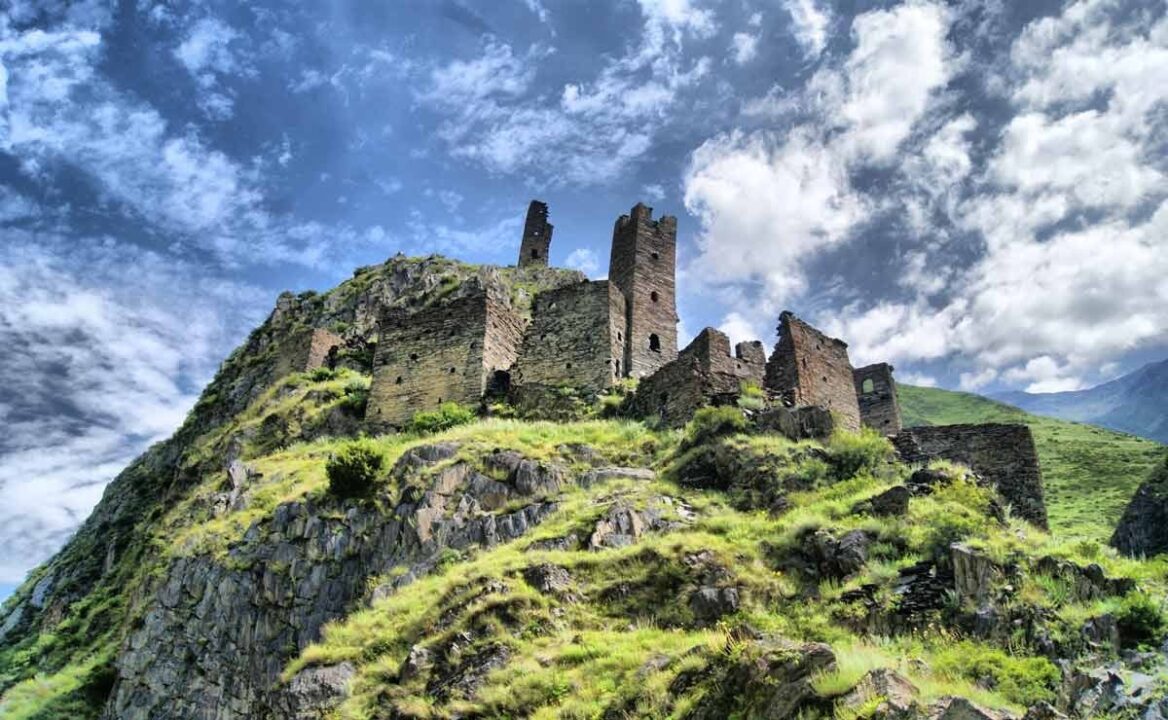
Photo Source: Tour Guide Georgia
With less than 3,000 inhabitants Khevsureti is arguably one of the most inaccessible regions of Georgia. Some inspiring medieval cultural monuments, including castle-towers, ritual places, and tombs are still preserved in this picturesque region of Georgia.
You can travel by any means in the summer months, but during the winter the road is closed due to heavy snowfall and only Barisakho remains accessible. When travelling from Tbilisi you can either take a shuttle bus (Marshutka) to Barisakho which is a distance of 100km (62 miles) and takes around 3 hours or a shuttle bus that goes directly to Shatili which takes around 5 hours from Tbilisi.
Located 1400m (4,600ft) above sea level, Shatili is known to be one of the most valuable and outstanding examples of Georgian vernacular architecture. With its fortress-settlement and some 60 towers in it, Shatili has been a UNESCO World Heritage site since 2007. This is the place (just 6km/3.8miles away from the border) that successfully served as a fortress, loyally protecting Georgia’s northern pass from invaders throughout history. Overlooking the river Arghuni, Shatili is located on a rock. The towers, built in stone, served both protective and residential functions. Through the centuries the buildings underwent a lot of turmoil, but are luckily still there. So we suggest you spend one night inside and enjoy a Khevsurian breakfast in the morning. Locals have everything organised for visitors, so use your chance. It’s a rare chance to visit a fantastic place like this. Starting from Shatili, a long trekking route connects to Tusheti through the Atsunta pass and Tebulo. You can also visit Mutso which is 12km/7.5miles away.
Every autumn an event is held called “Shatiloba”. This is a day dedicated to Shatili. It involves everything authentic, from mountain horse racing to making Khinkali and heavy drinking. It is a wonderful occasion to meet locals and see how the village breathes. Khinkali here are AMAZING so do not hesitate to taste them!
Kelitsadi
This glacial lake’s trail starts in the picturesque Truso valley. The Government doesn’t allow for just anyone to go so you will have to apply for a permit. Also, be sure to take a GPS tracker. Unmarked trails are tough and it’s easy to get lost and wind up in a dangerous situation. Be sure to visit Khorisari Peak as well if you have any time and energy left.
Tusheti

Photo Source: Daily Sabah
Road to Tusheti is one of the most dangerous roads in the world. It is a feat of bravery to drive to this destination, but as Tusheti is our favorite place in Georgia and one of the most beautiful places on planet Earth, the trip is absolutely worth it.
It is not merely the mountains or valleys, but the people and their history that form the unforgettable ambience of this place. Massive archeological works have never been held in Tusheti. However, the oldest crafts found here date back to between the 7th-9th centuries B.C. Most of the facts known about Tusheti were gathered in the 9th century and were collected from folk songs and poems of local people. It is obvious that Tushi people have participated in numerous wars to protect Georgia from conquerors, but in peaceful times they were shepherds. They spend 7-8 months in deep snow, blocked from the world. Most of the locals have a mysterious, silent smile that is probably a consequence of a turbulent past. Clouds surrounding them create an unreal world full of striking mystery. You can see 20 different scenes from the same view because the clouds are so close, and constantly in flux, that the light and forms are always changing the landscape. Enjoy breathtaking views while sipping Aludi – amazing local beer that tastes nothing like you have tasted before.
Oreti
This walk takes you from Lower Omalo where you will find great panoramic views of one of the most remote regions in Georgia. The ideal period to visit is in the early summer. To make the trip a bit easier, you could have a horseback ride – you can hire one in Omalo.
Svaneti
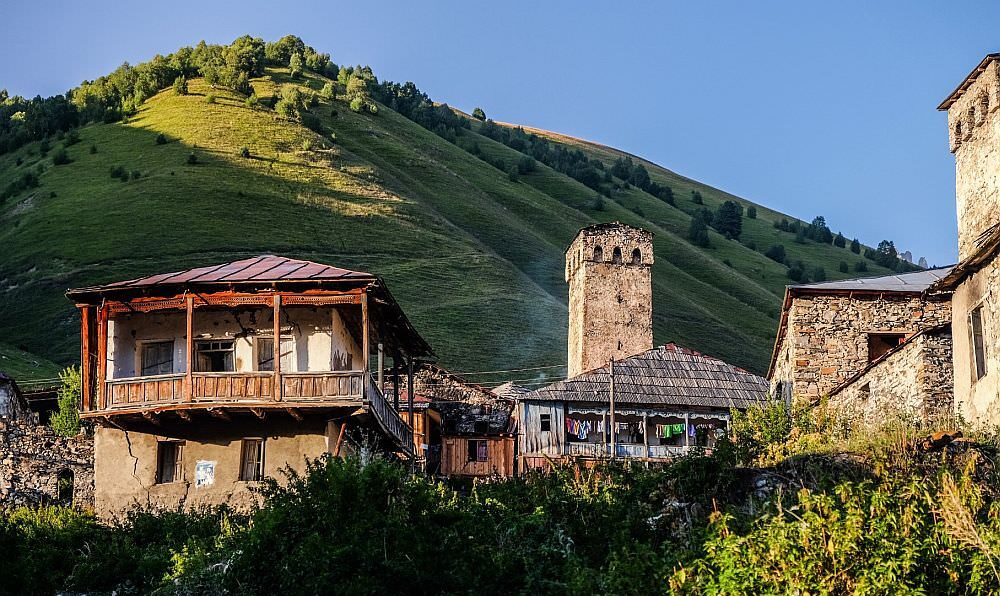 Photo Source: Caucasus Trekking
Photo Source: Caucasus Trekking
Svaneti, one of the most remote areas of Georgia, is a land of medieval defense towers, breathtaking nature, ten of the highest peaks of the Caucasus Mountain range, and a UNESCO World Heritage Site. With recently renovated infrastructure, the area offers plenty of things to do for its visitors, and we have compiled the best activities you can enjoy on your trip to Svaneti.
Located 1,500 meters (4,921 feet) above sea level, Mestia is a great spot to start exploring the region. From here, you can walk to glaciers, learn about the Svan culture at the museum, try local delicacies, and ski at one of Georgia’s top ski resorts.
The History and Ethnography Museum is one of the most important museums you should visit in Georgia. Located in Mestia, the museum was founded in 1936 and showcases several significant historical artifacts both from Svaneti and the rest of the country. Here you’ll learn about the lifestyle of Svans, see unique engravings and icons, explore medieval weaponry and see remarkable works of jewelry.
Hiking lovers will enjoy their time in Svaneti, as there are plenty of opportunities here to do so. One of the most popular treks to embark on is from Mestia to Ushguli. Taking around four days, the path is well marked and the tourist information center in Mestia has all the information you need. Ushguli is one of the most remote villages in Georgia, a UNESCO World Heritage Site and the highest settlement in Europe.
There is no need to worry about accommodation as each village along the trek has a guesthouse for you to stay overnight. However, if you’re not up to that long a hike, there are minibuses going to the villages.
Svaneti is home to the highest restaurants and hotels in Georgia, located on Mount Zuruldi. From here, you have breathtaking views of Tetnuldi and the Caucasus Mountain Range. Hotel Old House is our choice here. You can enjoy great local food on the sun terrace of an 8th century building.
If you are not a fan of long hikes and camping, but instead prefer small day-trips, then hiking to Chaladi Glacier might be your cup of tea. At 1,850 meters (6,069 feet) above the sea level, the trek only takes five to six hours both ways. This relatively moderate hike, with a little elevation gain, is the only one that extends into a frozen zone offering breathtaking views.
Villages to explore: Mazeri, Mele, Lentekhi, and Soli
Highest peaks to see: Shkhara, Tetnuldi
Local cuisine worth trying: Kubdari, Tashmijabi, Fetvraal
Koruldi Lakes
A hike of 16 km (9.9 mi) on a paved road at an elevation of 1400 m (4, 593 ft.) should take you to a group of alpine lakes lying at the foot of Mt. Ushba. The view of the surrounding mountains is superb. The route starts at Mestia and the whole hike takes up to 4 hours to reach the lakes. Fortunately, the road is well marked with wooden poles. For some people, these lakes are little bit disappointing because they are a bit muddy and not much fun to swim in. But the beautiful reflection of the surrounding mountains is much better trade-off.
Racha

Photo Source: Tour Guide Georgia
A four hour drive and 300 km (190 mi) away from Tbilisi lies the region of Racha – a highland area located in North-Western Georgia. This place has always attracted Georgian and international tourists and with recent infrastructure investments, it’s popularity has been increasing.
The first place you should visit in Racha is Shaori – the largest lake in this region. In autumn, the colorful trees that reflect in the water create a fairy-tale land. During summer it is a welcomingly cool place for picnics. Fishermen appreciate Shaori as carp up to 10kg (22 lbs) are often caught in its waters. Ten minutes further into the heart of Racha and you will arrive at the village of Nikortmsinda where a 10th century temple is located and is currently a UNESCO World Heritage Site candidate.
Ambrolauri is a small city with a population of only 2,000 people located 550 m (1,800 ft) above sea level. Interesting sights in this city include the Museum of Fine Arts and Brakoni, a Georgian Orthodox church. The latter is a 12 minute drive from the city center. The Museum of Fine Arts holds over 550 paintings of well-known Georgian artists.
Oni is 30 km (19 mi) North-East of Ambrolauri and is the municipal center of Racha. According to the legend, the city was founded in the 2nd century BC though it’s probably much older as it has been inhabited since the Bronze Age. Visit Oni’s Local Museum founded in 1937. It houses 15,000 archaeological artifacts, architectural elements, and ethnographic objects such as textiles, coins, and painting books.
You can also check out ruins of old medieval forts and Orthodox churches as well a Synagogue built in 1880. If you have time, you shouldn’t miss the villages of Utsera and Shovi near Oni. These have breathtaking landmarks with some amazing hiking routes and spas.
Lake Udziro
Udzitro is a small alpine lake and its name literally translates to “Bottomless”. It is located near the Shovi Resort in Racha, on the slope of Mt. Katitsvera, at an altitude of 2,800m. It takes 2 days to reach the camping site at the lake. You can enjoy breathtaking panoramic views of Tetnuldi (4,852 m/15, 918 ft), Shkhara (5,200 m/17, 060 ft) and Ushba (4,700 m/15,419 ft) and many other summits of the Greater Caucasus Mountain Range as you hike along Mt. Katitsvera’s trails.
Samegrelo

Photo Source: Tour Guide Georgia
Samegrelo is a coastal region located in Western Georgia. In ancient times, Samegrelo was part of the Colchis Kingdom and one of the first proto-Kartvelian kingdoms formed in the south of the Caucasian mountains. It is rich in cultural traditions and archeological artifacts, as well as untouched natural beauty. The Black Sea has a major influence on the subtropical climate of the region and creates an environment for flora and fauna that you will not encounter in Georgia’s Eastern regions. Also Samegrelo boasts delicious cuisine full of distinct, spicy foods. Samegrelo is mainly inhabited by Megrelians. They speak a dialect of Georgian known as Megruli and nearly all speak fluent Georgian. Megreli are one of the largest Georgian subgroups, making up 23% of the whole population.
Kolkheti National Park straddles the Samegrelo and Guria regions. Kolkheti National Park covers an area of 28,940 hectares, incorporating the land of the former Kolkheti State Nature Reserve, including Lake Paliastomi (surface area measuring just 17.3 km²/6.6 m²) that is great for fishing. Also, some items from ancient Colchis were found near and in the lake by archaeologists. The park has several marked tourist routes, several of them concentrating on the surrounding areas of Lake Paliastomi. The lake attracts migrating birds, especially in early spring and late autumn, and is a popular destination for bird-watching. Kolkheti National Park also offers a wide variety of boating tours, eco-educational tours, as well as other services like tent rentals, binoculars, and picnic areas.
Tsalenjikha is located on the edge of Egrisi Mountain range, 30 km (18 miles) from Zugdidi. Historically, Tsalenjikha functioned as a residence for the Dadiani princes of Samegrelo. A bishop’s cathedra also sits within the medieval Cathedral of the Savior (12-14th cc). The cathedral is a central cross-domed church best known for its unique cycle of murals. In the village of Chkvaleri, located 40 minutes drive from Tsalenjikha, you can find the beautiful Intsra Waterfall. From Chkvaleri there is a nice hiking trail to Kuakantsalia or “The Swinging Stone”. The rock stands on a limestone massif and a simple touch from a human can make the giant rock wobble. The rock is located on Kvira Mountain, which offers a picturesque view of the Enguri River Lowlands. Enguri Dam, near Jvari, is the world’s second highest concrete arch dam with a height of 271.5 meters (890 ft). It offers spectacular views, so we recommend you to stop by when you are traveling in the area.
Your route should continue to Martvili – a historical place that has lots of stories to tell. On its highest hill stands a monastery, but in ancient times this place used to be a pagan cultural center and was a sacred site. An enormous oak tree that stood here was worshipped as an idol of fertility. Today people usually visit the Martvili canyons to enjoy its waterfalls and take a boat trip within its emerald river. Entrance costs 3 USD and boat trips 5 USD per person. There also are walking routes through the canyon and they are as impressive, if not more, than the boat trip.
Zugdidi is a Capital of the Samegrelo-Zemo Svaneti region. The main architectural sights of this city are the Dadiani Palace Museum and the Old Botanical Gardens. The Dadiani Palace’s History and Architecture Museum houses exhibits on Georgia’s natural cultural heritage – precious materials, sacred Christian artifacts, manuscripts from 13th – 14th centuries, miniatures, memorial relics of the Dadiani dynasty and objects connected to the French Emperor, Napoleon Bonaparte. The House of Dadiani was a family of nobles, with a lineage dating back to 1046.
As for the botanical garden, construction on this decorative garden began in 1840. David Dadiani, the ruler of Samegrelo, fenced in a forest area surrounding his palace and set up an institution for horticultural sciences there. Soon, its caretaking and management passed to his wife, Ekaterina Chavchavadze-Dadiani, who added a great variety of native and exotic plants the garden. The garden now has over eighty genera of exotic plants introduced from Southeast Asia, India, Japan, the Mediterranean, and the Americas.
Tobavarchkhili
These lakes are located in Samegrelo within the Egrisi Mountains. There are several small lakes surrounding the main one and all of them are beautiful in their own right. The nearest settlement is Mukhuri, where you can hire a jeep or start your trek out on foot.
Imereti
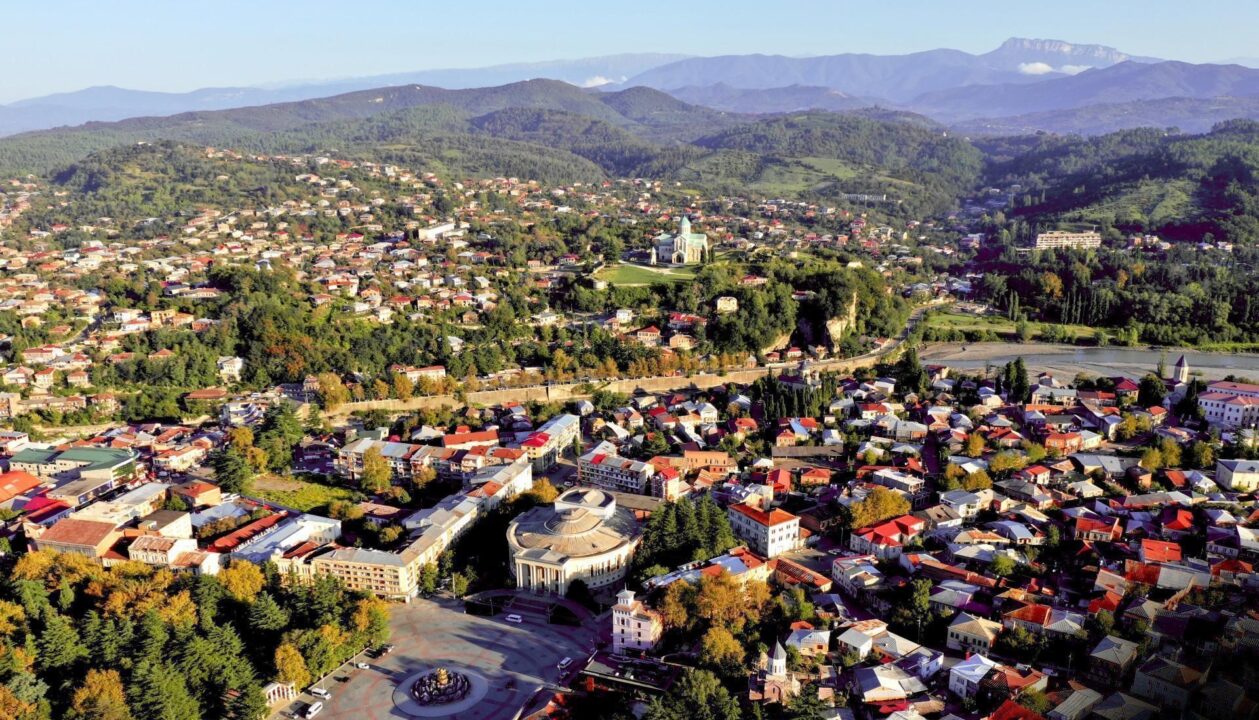
Photo Source: Georgian Travel Guide
Kutaisi, the capital of Imereti, is one of the world’s oldest continuously inhabited cities. It was founded around 4 millennia ago. The cradle of ancient civilization in Georgia always served as a main cultural and educational center of the region. Nowadays it is the third largest city and one of the most popular tourist destinations in Georgia.
It’ll take no more than 30 minutes to walk through the historic sites. Places that shouldn’t be missed include the Opera House with its outstanding Lion statues stood proudly on top of the roof, Lado Meskhishvili State Drama Theater – perhaps the most beautiful architectural creation in the region, and the Imereti King’s residence (Okros Chardakhi) located on one of the squares between two bridges – Rustaveli and White Bridge.
Two must see destinations in the city are Bagrati and Gelati.
Bagrati Cathedral in Kutaisi ranks among the best monuments of Georgian architecture. The cathedral was built in the 11th century during the reign of King Bagrat III, who unified Georgian regions into one kingdom. While Tbilisi was occupied by Persians for around 400 years, Kutaisi served as a capital of the Georgian kingdom. The church is situated on the high, rocky right bank of Rioni river.
Later in the 17th century a Turkish explosion left the cathedral in a ruined state until it was fully renovated between 2009 and 2012, using a mix of old and new stone and a few steel sections. The cathedral gained UNESCO World Heritage listing in 1994, but the recent renovation has put it in danger of losing this status. Getting up to the Bagrati Cathedral is a must while you’re in Kutaisi. It is visible from everywhere in Kutaisi, so you will not be lost on a way there.
Gelati is a medieval monastic complex near Kutaisi, consisting of three churches. It was founded in 1106 by King David IV of Georgia (who is buried there) and is recognized by UNESCO as a World Heritage Site. Gelati Monastery served as an educational center for centuries, therefore a great number of murals and manuscripts dating back to the 12th to 17th centuries have been preserved. Gelati is a beautiful, huge cathedral which contains wonderful mosaics and wall paintings. If you stay inside for a couple minutes, you’ll discover an amazing quietness which gives you inner peace.
There are several places near to Kutaisi that you should also definitely visit.
Okatse Canyon is a great place for hiking with its beautiful waterfall and lake. The Prometheus and Sataplia Caves are also an interesting destination to visit. They belong to the Imereti Protected area and are so close that you can visit them in one day. Inside Prometheus Cave you can find very special forms of stalactites, stalagmites, petrified stone waterfalls and hanging curtains, an underground river and lakes. Sataplia is best known for dinosaur footprints along the cave and an amazing view over Kutaisi. There is a special glass belvedere overlooking the city. Just under that mountain you enter into a mysterious, small tunnel leading to the greater Sataplia cave halls. In the very center of the cave you’ll see a nice heart-shaped stalagmite. There is a restaurant and some attractions outside the cave in case you decide to enjoy the fresh scent of West Georgia’s subtropical forest.
Katskhi Pillar is a tiny church on the top surface of a natural limestone monolith, which is approximately 40 meters (130 ft) high. There, in virtual solitude, lives a monk who spends 20 minutes every day climbing down a narrow ladder. The building, dating back to the 9th century, is an extraordinary thing to behold.
Kutaisi Botanical Garden was established in the mid-19th century and contains about 700 species of trees and shrubs. The most interesting plant there is a giant oak-tree; it is 400 thousand years old and has turned into a miniature chapel. The oak tree reaches a height of 45 meters and is around 2 meters in diameter. The hollow that has been transformed into a chapel, seizes almost a quarter of the entire tree, and three people can freely fit inside.
Adjara
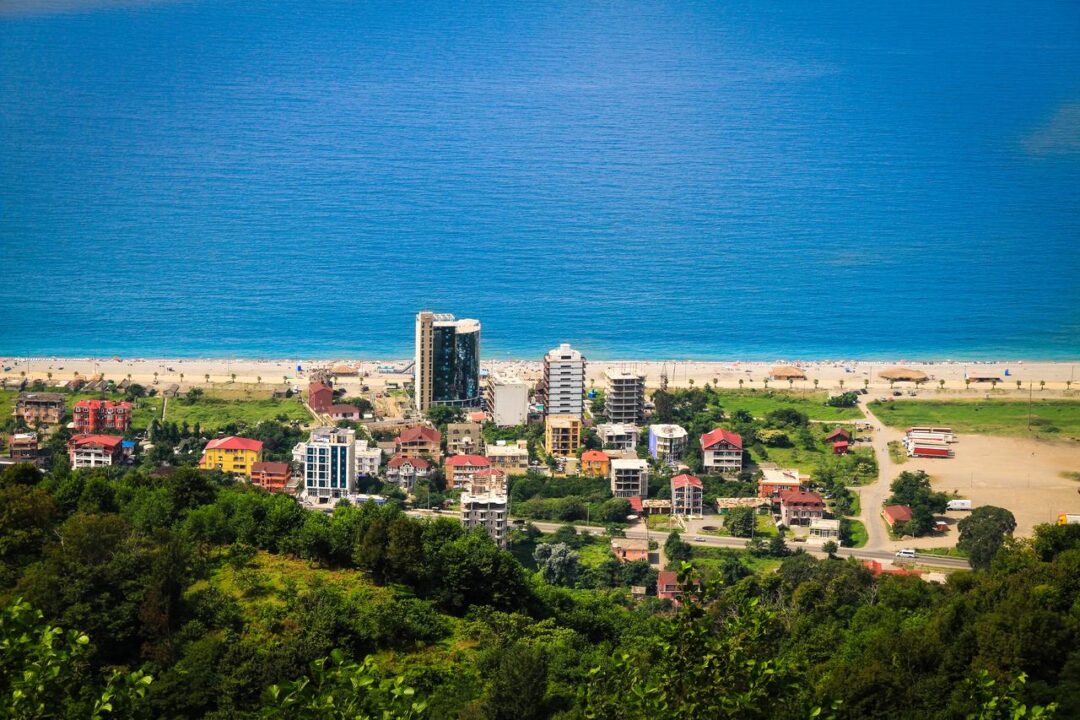
Photo Source: Tour Guide Georgia
Your trip to Georgia wouldn’t be complete without spending a couple of days in Batumi, a major city of the seaside region Adjara. Batumi is the main port in Georgia and it handles oil shipped from Central Asia. The city is rapidly developing and is becoming a beloved destination for foreign and local tourists. Our favorite time of the year to be in Batumi is either late July or mid-September. You can spend a weekend there and collect tons of experiences in just 2 days.
The first thing you should do is walk along the boulevard. This is a coast line at the seaside that starts at Batumi port and ends at the dancing fountains. You can purchase a transportation card at the tourist information center (the closest one is at the main entrance of the boulevard, where the wedding house is located) and rent bicycles. There are bicycle lanes across entire boulevard. First go in the direction of the dancing fountains and then head back in the direction of the Ferris Wheel. Spend some time here watching the magnificent statue of Ali and Nino – a moving sculpture of a romantic couple that separates and comes together.
We strongly advise your next stop to be the fish market by the port. Enter the market to buy fresh fish and mussels and then you can go into the café Balagan next to it, which will cook your ingredients and serve your recently bought fresh seafood. Our tip is not to buy shrimps as usually they are imported rather than being locally caught. After a heavy dinner, you may appreciate a cup of Turkish coffee prepared in the sand. Go to the port and ask the locals for the sand coffee. Believe us, this is something not to be missed.
Later in the evening head to the cable car station, the entrance of which is located at the entrance of the city center, not far from the sea side. Take a ride and you will arrive at the top of the hill which offers a magnificent view over the entire city. You can enjoy the sunset with a glass of wine, shop for some souvenirs or have a snack at the lovely café.
Save the best for the following day – Batumi Botanical Garden. Located on 100 hectares of land, this place has over 5,000 varieties of plants from all over the world. You can find trees from Asia, flowers from South America, evergreen gardens, bamboo forests, and our favorite, titanium trees. Entrance price is around 3 USD. You can pay another 3 USD for a ride in small excursion cars, but we strongly advise you to walk. After you follow the major route to the end of the park, go back through the tiny trails and enter the depths of the forests. For the best views, keep to the side closer to the sea.
Mtirala National Park
Mtirala is one of the most humid areas in the region. The name is translated from Georgian as “crying”. Frequent rainfalls formed beautiful chestnut and evergreen cherry forests and a stunning landscape of mixed woods. The park offers one-day and two-day hiking routes, as well as horse riding, and guided eco-tours. There is a tourist shelter in the park and well-organized camping places.
Guria
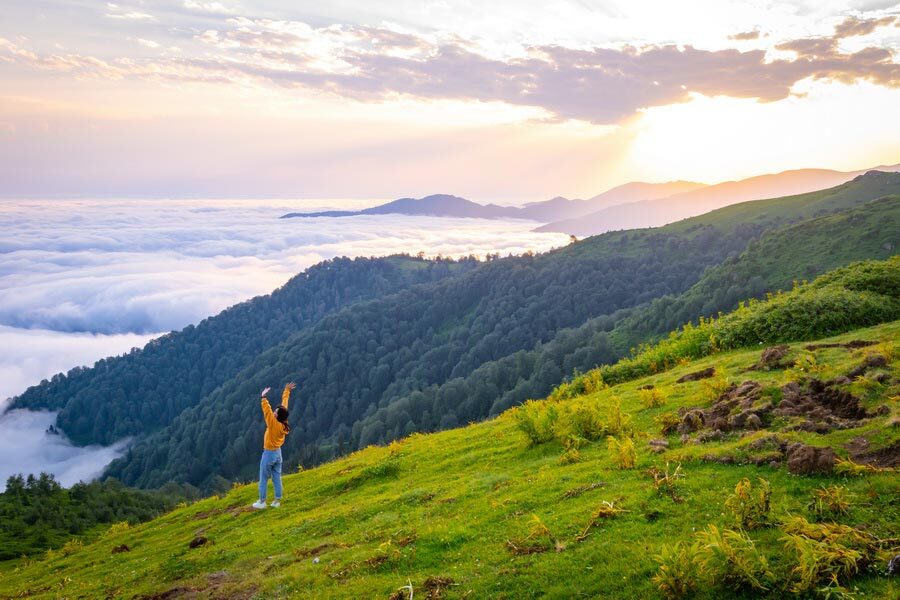
Photo Source: Advantour
This is one of the least developed regions of the country, but at the same time is a home to the most humorous and kind hearted people. It is best known for the curing qualities of its resorts.
Located 2,000m above sea level, Bakhmaro is the highest alpine climatic resort in Georgia. It is a beautiful mountainous resort with heavenly landscapes, beautiful pine forests, alpine meadows and amazing views. Due to the mixture of sea and mountain air, the resort is beneficial for people with respiratory problems. It is also famous for extreme horse racing held on August 19th every year. If there is a heaven on earth, it is most probably Bakhmaro.
Other famous resorts in the region are located on the seaside – Ureki and Shekvetili. They are known for grey colored magnetic sand that is believed to treat a number of health problems, including cardiovascular diseases.
Gomis Mta
This climatic summer resort of Ozurgeti Municipality lays at 2,100-2,755 meters (6,800 – 9,040 feet) above the sea level. With its mountainous landscape, surrounded pine and fir forest, and jaw-dropping panoramic views of the sunrise, Gomis Mta has become a popular camping destination for many Georgians. The climate here is moderately dry, with cold and snowy winters and cool summers.
Samtskhe-Javakheti
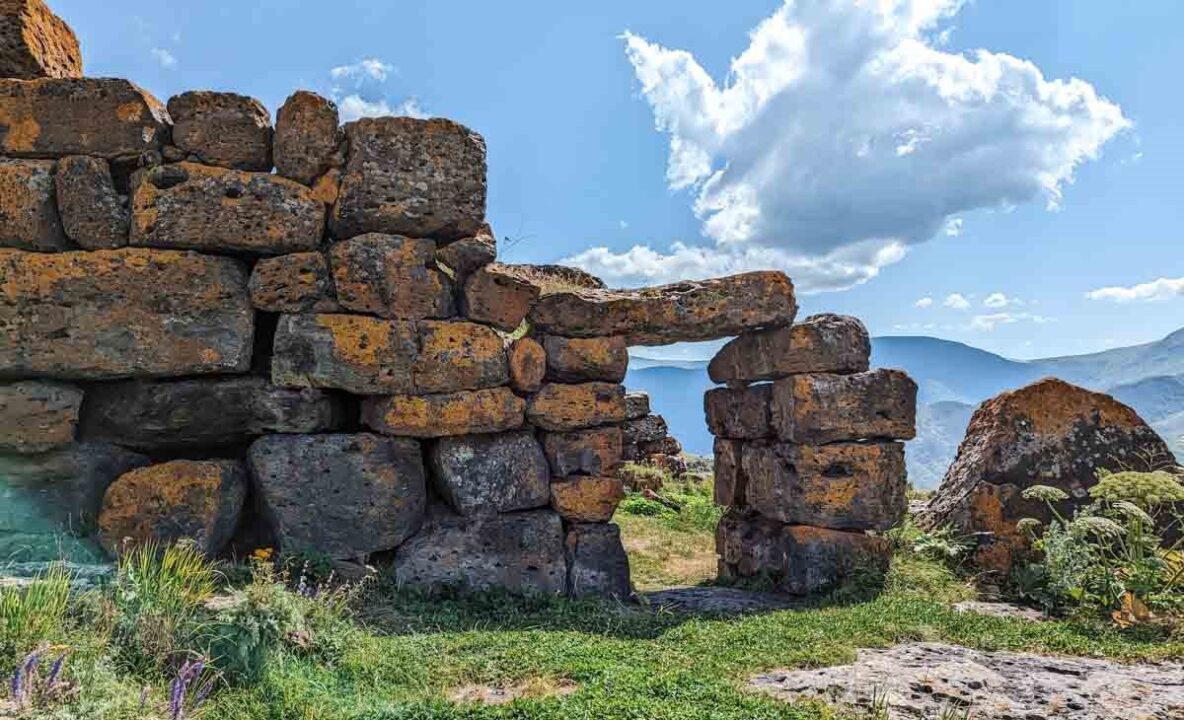
Photo Source: Red Fedora Diary
Borjomi-Kharagauli National Park is one of the largest in Europe. It occupies about 1% of Georgian territory and covers 6 regions. There are entrances from all regions, but only 2 are considered main entrances – Borjomi and Kharagauli. Here, at the visitor centers, tourists have to register before entering the territory. Please have your passport with you. You can enjoy hiking, horse riding, biking, snow trails, picnics, and guided tours.
Next to Borjomi, there is a small settlement called Abastumani. It is the home of Georgian Astronomy. Here in the observatory you can have a close look at the moon and, if you are lucky with the weather, several planets and stars as well. It is a place of tranquility and offers some breathtaking views over colorful forests.
Nearby is the medieval Castle of Rabati that looks like dragons have been drifting over it for centuries. It has been renovated and is known as a great attraction for tourists.
The region’s most important tourist attraction is Vardzia. King Tamar ordered the construction of this underground sanctuary in 1185 in order to save the population from Mongol hordes. It used to be a monastery complex with 6,000 apartments, a temple, and a throne hall. The sanctuary lasted the Mongolian invasion but was destroyed centuries later by the Persians. However, the remains are still there, resembling a landscape from The Lord of the Rings.
If you are looking to go on a winter holiday with children, Bakuriani is your destination. It is a settlement full of fair trees which is higher above Borjomi and offers great skiing routes and plenty of attractions for kids.
Tabatskuri
If you are not into hiking long distances, this option is for you! Tabatskuri is for those interested in a more relaxed hike. Reachable by vehicle, Tabatskuri Lake is located between Borjomi and Akhalkalaki districts in the Samtskhe-Javakheti Region. We recommend you visit the lake from the start of June till the end of October when the surrounding inactive volcanoes are covered with snow and the valleys are still green.
Kartli
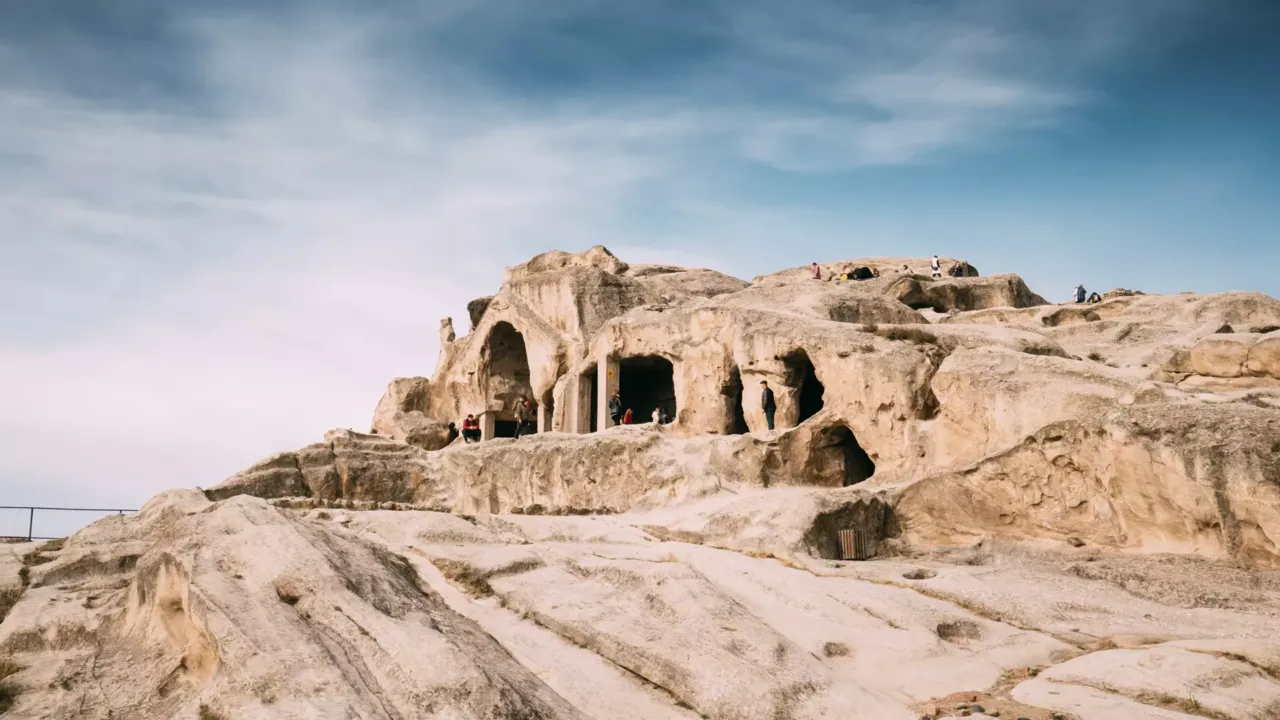
Photo Source: Georgia Travel
Dmanisi is the place in Kartli, where fossils of the first Homo Erectus Georgicus were discovered. The remains are approximately 1.8 million years old and are believed to be the first hominin outside of Africa. Therefore, Georgia and in particular Dmanisi, claim to be the home for first Europeans.
Furthermore, Kartli is scientifically proven to be the homeland of wine. Shulaveri is a small settlement where the world’s first wine was created 8,000 years ago. Biochemical analysis of the vessels found in Shulaveri prove that they were used for vinification centuries before anywhere else in the world.
Bateti
If you turn left at the sign of Tbeti Monastery, you can find your way to the small and beautiful Bateti Lake, located near the village of Kodmani. It will require 1 hour to ascend along the muddy road to reach the lake. The best time to visit is during autumn, as the surrounding area is rich with colors. Bateti Lake can also be reached from the village of Levitana in Gori – the birthplace of Soviet dictator, Stalin.
Mtianeti

Photo Source: Georgia Travel
Stepantsminda, commonly known as Kazbegi, is a small town in the North-East of Georgia, close to the Russian border. It is part of the Mtianeti region and is definitely one of the must see destinations in Georgia, mostly due to the amazing hiking routes and stunning nature.
The most important thing you should do in Kazbegi is to visit Gergeti Trinity Church. Built in the 14th century, this church is located 1,800 meters above sea level (5,905 feet). If you are well prepared and have time, you can walk, but it will take up to 2 hours. Other options include renting a horse or a taxi. A horse ride will cost 22 USD. It’s a memorable experience, but the ride will not be easy. Taxis are usually a make of car called Niva which were manufactured in the Soviet Union and the ride also costs about 22 USD. If it is you first time in a Soviet car, let us warn you that this won’t be much easier than taking a horse.
Gveleti Waterfall and the ruins of a fortress are located only 9 km (5.6 miles) from Kazbegi. You can rent a taxi at the main square in Kazbegi, but note that you have to walk the last several hundred meters and the route is not that easy.
If you are an experienced tekker, you will be glad to explore Mkinvari, a peak which sits 5,047 m (16,560 feet) above the sea level. This mountain offers two routes, but do not risk climbing there on your own. We strongly suggest to apply to professional alpinists, who regularly organize trips during the summer. Tours usually last around 5-6 days and can cost up to 500 USD. Be well prepared for an extreme hike.
A bonus tip – on your way to Kazbegi or back, stop to taste Khinkali in the place where it is cooked best, Arsha. The place is called – Tsanareti. It is unbelievably cheap and delicious.
Arguably the best and most developed ski resort in Georgia – Gudauri lies in this region and is only a couple of hours drive from Tbilisi. High season starts in January and ends in April.
Abudelauri
It takes 7km (4.3 mi) to hike from the village of Roshka to Abudelauri’s first two lakes and then an extra half an hour to reach White Lake. You can cover the whole trek in one day (from Roshka and back), but we recommend you to relax and take your time. You will first reach Blue Lake along the path and then find Green Lake a bit later. Set up camp at Green Lake before proceeding to White Lake and then return to your camp for the night. The best season to see these lakes is in Summer and early Autumn.
Mtskheta

Photo Source: Georgia Travel
Mtskheta was the ancient capital of the Eastern Georgian Kingdom from the Third Century BC to Fifth Century CE. It was also the location where Christianity was proclaimed as the kingdom’s official religion. The city is very small and is just a 20-minute drive from Tbilisi. Major sightseeing includes monasteries and ancient churches.
Translated as “The Monastery of the Cross”, Jvari is a 6th Century Monastery that is, coincidentally, in the shape of a cross. It is located on a mountaintop with a great view of the meeting between the rivers Mtkvari and Aragvi, as well as the entire city of Mtkskheta. Jvari Monastery is listed as a World Heritage Site by UNESCO, along with other historic structures in Mtshketa. Jvari is the perfect place for those looking to travel back in time and enjoy the architecture of the Middle Ages. Note that due to its location the place is windy throughout the entire year, so be prepared.
About 13 kilometers (8 miles) from the city of Mtskheta is a limestone canyon in which you will find a beautiful medieval monastic complex. In the 6th Century, it was a vibrant religious community, populated by around 2,000 monks. St. John the Baptist’s Monastery was the first to be built, whilst the rest of the Shio Mgvime complex was built over time.
The most intriguing part of this monastery is the various unmistakable caves around the mountain. It is in one of these caves that Shio, the missionary and founder of Shio Mgvime, one of the original 13 Assyrian Fathers who came to Georgia to spread Christianity lived. It is because of Shio that the monastery gets its name: “The Cave of Shio.”
And of course, Mtskheta is the home of arguably the most well-known cathedral in Georgia, Svetitskhoveli. Harsh conditions throughout Georgia’s history couldn’t stop the 10th century old building from retaining its beauty. The temple is on another UNESCO World Heritage listing because of its glorious architecture.
Svetitskhoveli was the religious centre for all Christians for many centuries. Further proving its importance to Christianity, there is a legend that a seamless robe of Jesus Christ is buried within the temple. Another legend states that King Giorgi ordered to cut of the hand of Svetitskhoveli’s architect, so that he could never recreate something as beautiful ever again. There is still a hand depicted on the Northern facade of the building. Small fragments of paintings which date back to the 11th century allow you to live through the lives of ancient Georgians, leaving you amazed and stunned. Even though Georgia is packed with many astonishing churches and cathedrals, Svetitskhoveli is a must-see for any tourist visiting the country.
The Zhinvali Dam is a hydroelectric dam on the Aragvi River. Despite its obviously artificial origins, the reservoir blends in with the surrounding environment perfectly and delights visitors with its Turquoise waters. Enjoy the view of the reservoir from Ananuri Fortress, which is a popular tourist sight for its stunning, panoramic views. Descending to the shores of the reservoir you will notice the ruins of a church belonging to an older settlement which was relocated away from the flooding area of the dam.
Abkhazeti and Samachablo

Photo Source: OC Media
Two brakeaway regions of Georgia – Abkhazeti and Samachablo are occupied by Russian troops. These regions declared independence, but only 5 countries, including Russia supported them. The rest of the world recognizes Abkhazeti and Samachablo within Georgia’s borders. At present it is forbidden for Georgians to enter these regions. Tourists can cross the border from both, Georgian and Russian sides, but those who enter from the Russian territory will have difficulty visiting Georgia afterwards. Unfortunately, we are not able to provide any advice on visiting these troublesome regions. As an act of respect for thousands of refugees who have fled from these regions and in the memory of those who died from both conflicting sides, we hope that you will help us spread the word on this tragedy.
We created Memo — a brand where Georgian memories come to life.
Visit Memo By GSH and take a piece of Georgia with you – Www.memories.ge


